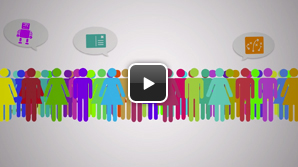What is VAT?
VAT, or Value Added Tax, is levied on the sale of goods and services in the UK. It is a type of ‘consumption tax’ because it is charged on items that people buy and is also an ‘indirect tax’ because it is collected by businesses on behalf of the Government.
What are the current VAT rates in the UK?
The standard rate of VAT in the UK is currently 20% and this is the rate charged on most purchases. However, there are other VAT rates which you need to be aware of as a business.
Reduced rate VAT is charged on sanitary products, energy saving measures and children’s car seats and is charged at 5%.
The zero rate – as the name suggests, charged at 0% – is applied to most food, books, newspapers and children’s clothes. Although no VAT is charged, the sale of zero rate goods and services still has to be recorded and reported on your VAT return.
On top of that, some items are ‘exempt’. These include postage stamps and financial and property transactions. As with zero rate items, no VAT is charged on these goods and services. However, these do not need to be counted in your taxable turnover.
EU law dictates that the standard rate of VAT in EU states should not be lower than 15%.
How has the VAT rate changed?
VAT was introduced in 1973, replacing the Purchase Tax. This previous tax was levied when goods and services were produced and distributed not when they were sold, as is the case with VAT. The Purchase Tax had a different rate for different types of goods.
The standard rate of VAT has changed over time, with Governments choosing to raise or lower this tax depending on their priorities and the state of the economy. The rates were:
| Year | Standard rate of VAT |
| 1973-74 | 10% |
| 1974-79 | 8% |
| 1979-91 | 15% |
| 1991-2008 | 17.5% |
| 2008-09 | 15% |
| 2009-11 | 17.5% |
| 2011-present | 20% |
You should be aware of the fact that VAT rates can change and bear this in mind when calculating VAT. By keeping up to date with the latest rate you can ensure that your invoices and accounts are accurate. Our VAT calculator can help you to get your sums right, regardless of the VAT rate.
Who pays VAT?
Businesses with a turnover of more than £85,000 must register to pay and charge VAT on the products and services they buy and sell. Other businesses can choose to register for VAT voluntarily.
Businesses charge their customers VAT, but must then pay this to HMRC when they file their VAT return.
How do you pay VAT?
HMRC can accept VAT payments in a number of different ways. Same day or next day payments can be made:
- Using Faster Payments on the phone or online
- By CHAPS using an online form
There are also a number of other different payment options, which may take up to three working days to go through. These are:
- Direct debit
- BACS
- Standing order (for some VAT schemes)
- Debit or credit card
- At a bank or building society
Read the ‘Pay your VAT bill’ section of the Government’s website for more information.
How to charge VAT
As we’ve seen, VAT is an indirect tax, collected by businesses on behalf of the Government. This means that you need to add it on to the amount you charge customers for products and services. It’s important to do this properly at the point of sale so that you can then file an accurate VAT return and pay any money that you owe to HMRC.
Invoices need to include:
- An invoice number
- The invoice date (and the date the goods and services were supplied if this is different to the invoice date)
- The name and address of your business
- Your VAT registration number
- The customer’s name and address
- A description of the goods and services covered
For each item on your invoice, you should make clear:
- The unit price excluding VAT
- The quantity
- The VAT rate
- The total to pay excluding VAT
- The amount of VAT to pay
- Any cash discount

